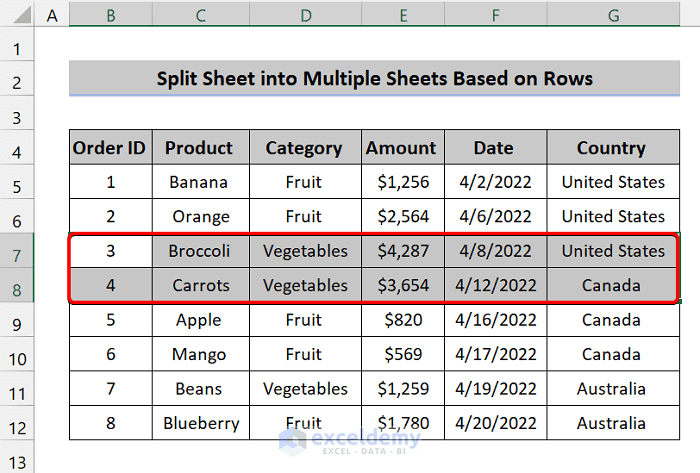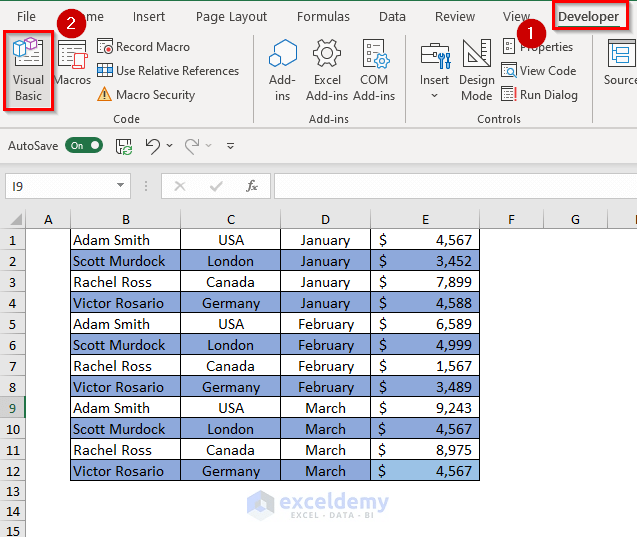3 Ways to Split an Excel Sheet in Half Instantly

Excel, a powerhouse in data management and analysis, often has users dealing with large datasets that can become unwieldy. Splitting an Excel sheet efficiently can save time and streamline your workflow, whether it's for sharing data, comparing sets, or just to make the data easier to navigate. Here are three instant methods to split an Excel sheet in half:
Using Excel's Built-In Features


Excel provides intuitive tools for managing large sheets, making splitting them an easy task:
- Freeze Panes - This feature allows you to keep rows or columns visible while scrolling through other parts of the sheet.
- New Window - You can open the same workbook in two separate windows to compare different sections side by side.
- View Side by Side - Once you have the workbook open in multiple windows, you can view them next to each other.
To split the sheet:
- Open your Excel workbook.
- Select the row or column where you want to freeze the pane.
- Go to the View tab and choose Freeze Panes. Select Freeze Top Row or Freeze First Column based on your need.
- Now, click New Window under the same tab to open another instance of the workbook.
- Click View Side by Side to arrange the windows for a split view.
💡 Note: Remember, changes in one window will reflect in the other since they both reference the same workbook.
Using VBA Macros


For more advanced users or when you need to automate the process:
- VBA (Visual Basic for Applications) is Excel's programming language for automation.
- With VBA, you can split your workbook into two separate sheets within seconds.
Here's how to do it:
- Press Alt + F11 to open the VBA editor.
- In the Project Explorer, double-click ThisWorkbook.
- Enter the following macro code:
Sub SplitSheetInHalf()
Dim ws As Worksheet
Dim lastRow As Long, halfwayRow As Long
Set ws = ThisWorkbook.Sheets("Sheet1")
lastRow = ws.Cells(ws.Rows.Count, 1).End(xlUp).Row
halfwayRow = lastRow / 2
ws.Rows("1:" & halfwayRow).Copy
Sheets.Add(After:=Sheets(Sheets.Count)).Name = "First Half"
With ActiveSheet
.Paste
.Cells(1, 1).Select
End With
ws.Rows(halfwayRow + 1 & ":" & lastRow).Copy
Sheets.Add(After:=Sheets(Sheets.Count)).Name = "Second Half"
With ActiveSheet
.Paste
.Cells(1, 1).Select
End With
Application.CutCopyMode = False
End Sub
📝 Note: Ensure you adjust "Sheet1" to match your active sheet name, and be cautious when running macros, as they can alter your data.
Using Third-Party Tools


For those who prefer external software solutions or need more complex splitting options:
- Several third-party tools offer enhanced functionality for Excel, including splitting sheets.
- These tools can provide more control over how you split the data and often come with user-friendly interfaces.
Here are steps to use such tools:
- Download and install a reputable third-party tool, such as Able2Extract, Kutools for Excel, or similar software.
- Open your Excel workbook in the third-party tool.
- Select the sheet you want to split, choose the splitting method (e.g., by column, row, or custom criteria).
- Follow the tool's instructions to generate the split sheets.
🛠 Note: Be aware that using third-party tools might come with learning curves and potential licensing costs.
To summarize, splitting an Excel sheet can be as simple as using built-in features, programming with VBA, or utilizing external tools. Each method has its pros and cons, depending on your comfort level with Excel, the complexity of the task, and the frequency of such operations. Whether you're an occasional user or a daily Excel aficionado, understanding these techniques can greatly enhance your productivity and data management capabilities.
How can I undo a split in Excel?

+
If you’ve split your screen using the View tab, you can simply go back to the View tab and select Unfreeze Panes or Arrange All to undo the split. If you used VBA, you might need to write another macro to merge sheets, or manually move data back to a single sheet.
Can I split my sheet into more than two parts?

+
Yes, you can split your sheet into multiple parts, but it’s not as straightforward with built-in Excel features. VBA macros can help automate this process, or you can use third-party tools that might offer more versatile splitting options.
Is there a performance impact when working with a split screen in Excel?

+
Working with a split screen can minimally impact performance, especially in older versions of Excel or with very large datasets. However, the impact is generally negligible unless your workbook is extremely complex or resource-heavy.



